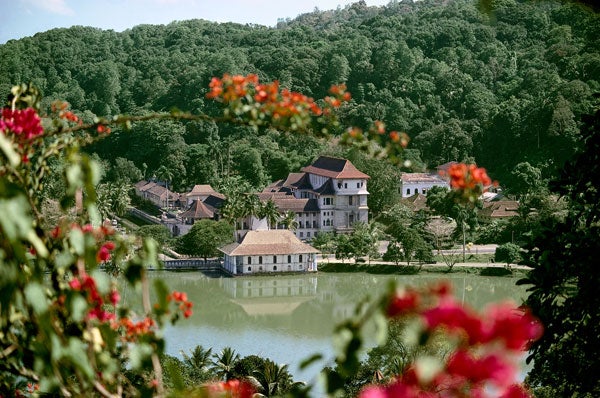Crusoe: Daniel Defoe, Robert Knox And The Creation Of Myth, By Katherine Frank

Your support helps us to tell the story
From reproductive rights to climate change to Big Tech, The Independent is on the ground when the story is developing. Whether it's investigating the financials of Elon Musk's pro-Trump PAC or producing our latest documentary, 'The A Word', which shines a light on the American women fighting for reproductive rights, we know how important it is to parse out the facts from the messaging.
At such a critical moment in US history, we need reporters on the ground. Your donation allows us to keep sending journalists to speak to both sides of the story.
The Independent is trusted by Americans across the entire political spectrum. And unlike many other quality news outlets, we choose not to lock Americans out of our reporting and analysis with paywalls. We believe quality journalism should be available to everyone, paid for by those who can afford it.
Your support makes all the difference.Daniel Defoe and his best-known book, Robinson Crusoe, need little introduction. Not only has Defoe's island castaway story continued to inspire major modern writers, such as William Golding, Derek Walcott and JM Coetzee; it also underlies the appeal of Desert Island Discs on radio, not to speak of "reality" television shows about castaways. But who is Robert Knox, the third name in the title of Katherine Frank's engaging historical investigation of the Crusoe myth? Outside of Sri Lanka, where Knox's story is well known, few people have heard of him.
It may be – and this is Frank's thesis – that Defoe borrowed extensively from Knox's escapades and his published and unpublished writings when creating Robinson Crusoe in 1719. She even imagines Defoe writing in London with a copy of Knox's book open in front of him. Knox was a 19-year-old East India Company mariner in 1660, when his ship stopped to trade on the coast of eastern Ceylon (the former name of Sri Lanka). Instead of sailing on to their next port, Knox, his ship's captain father and some other crew were captured by the suspicious king of Kandy, Raja Sinha II. Kept as prisoners in his mountain kingdom for two decades, they lived more or less like the Sinhalese.
Eventually, in 1679, posing as itinerant traders, Knox and an English companion escaped and managed to reach the Dutch-controlled western coast of the island. After sailing back to England, 20 years late – having missed the Restoration of Charles II, the Great Fire and the rebuilding of London – Knox fell in with Robert Hooke of the fledgling Royal Society. Hooke became fascinated by the memoir of Knox's captivity that he had written on board his returning ship, and offered to edit it.
In 1681, when Defoe was 21, the printer to the Royal Society published Knox's An Historical Relation of the Island of Ceylon in the East Indies: Together with an Account of the Detaining in Captivity of the Author and diverse other Englishmen now Living there and of the Author's Miraculous Escape. For a short while, the memoir was a bestseller. Yet, despite the efforts of its author, a promised second edition never appeared.
By the time that Knox's copious manuscript additions came to rest in the British Museum and the Bodleian Library in Oxford, the book's original fame was long forgotten. His work was published in full only in 1989, in Sri Lanka.
There is no direct evidence that Defoe ever met Knox, although they both moved in coffee-house circles in London. Nor did Knox mention that he read Robinson Crusoe. But it is certain that Defoe read Knox's work – because he quoted, or more accurately plagiarised, long passages from the book in his novel Captain Singleton, published in 1720, the year of Knox's death.
In her skilful parallel retelling of the tumultuous lives of Defoe and Knox, Frank points to many similarities between Robinson Crusoe and Knox's Relation. Some are easy to spot, for instance the Bible both Knox and Crusoe stumble upon, and their method of baking bread. Others are more debatable. I especially like the idea that the solitary footprint in the sand that disturbs Crusoe's peace of mind may have been Defoe's transformation of the lines of footprints in the sand of a Ceylon riverbank, running backwards and forwards, made by the escaping Knox and his companion to confuse pursuers. Influence and creativity often occur in just such a mysterious manner.
There is, however, a serious difficulty in awarding Knox the starring role in the creation of Crusoe. For Knox "went native" in Ceylon and was very curious about the place and the people; whereas Crusoe is determined to remould an uninhabited island into a home fit for an Englishman. Moreover, to quote Frank, the two men view captivity differently: "Where Knox saw loss, Defoe glimpsed a new beckoning life ahead." But if Crusoe's thesis is not proven, the book captures the vigour, toughness, cruelty, romance and excitement of late 17th-century England and its early imperial adventures.
Andrew Robinson's recent books include 'The Apu Trilogy' (IB Tauris)
Join our commenting forum
Join thought-provoking conversations, follow other Independent readers and see their replies
Comments